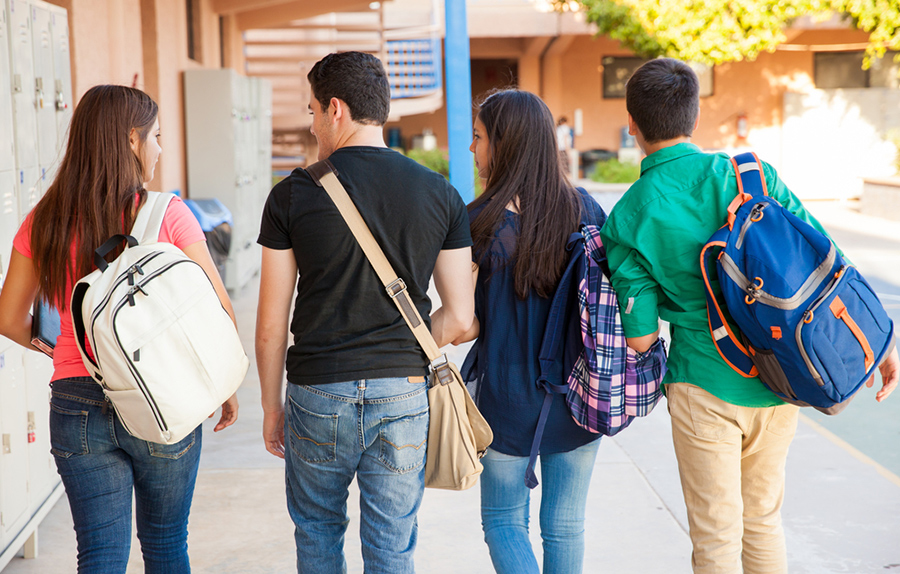Today, college is typically viewed as an integral part of obtaining a quality career and achieving long-term economic success. Thanks to this outlook, a great weight is put on getting into the best post-secondary educational institutions. While there are many issues with colleges and the current perception of them, this blog and post will focus on the public-school system and its impact on college placement, respectively. While performance within the public schools plays a major role, the quality of the schools has a large effect on college placement in a variety of manners.
In an earlier post, Niche was brought up. One of the many statistics it ranked schools by was college preparation. This statistic is calculated based on a variety of other factors, ranging from SAT scores to basic proficiencies in certain areas. Ultimately, it is trying to assess how ready a certain school prepares its students for college. One factor is past college placement. It accounts for what universities past students attended to determine the level of higher education the school’s students were prepared for in the past. Basically, it is attempting to paint a picture of where students might go afterwards, depending on how well their high school has prepared them.

Admission Factor Weights – Photo Credit
As mentioned earlier, there are many aspects of a high school education that affect college preparation. Of these, the quality of the school’s academics is one of the most impactful. Just browsing Niche, it quickly becomes evident that the schools with better academics are the institutions with better college preparation. This quality of education is measured by SAT scores and reading and math proficiencies. Essentially, the three things go hand in hand. They all rise and decline together as they are components or measures of one another. It would make sense that the test scores of a school that has a good education would rise and that same school would better prepare its students for college. The students coming from schools with greater college preparation typically get into better colleges thanks to their better preparation for what comes next.

GPA and ACT/SAT Acceptance Rates – Photo Credit
So, what is it that these better high schools offer to have better college preparation? One major offering of these better schools is AP classes, or Advanced Placement classes. These advanced classes are usually taken in high school and culminate in a standardized test that is administered by College Board. If a student does well enough on the assessment, they can then get college credit. The college would have to be willing to accept this credit and most do. These classes are an excellent way for students to prepare for college. They allow students to get a taste of the rigor that college will bring. Additionally, these difficult classes are something that college admissions staff look for in that it shows that the student is ready for college. While AP classes are a great resource for students, not all public schools are able to offer them to their students, making it difficult for their students to compete with their counterparts at better schools.
This may appear obvious, but SAT scores play a major role in college placement. They carry a significant weight in that the standardized test is meant to assess college readiness. A high score on the SAT will improve any students’ chances at getting into their dream school. Consequently, a low score could inhibit a student from getting into college altogether. Seeing as this test can have a drastic influence on college acceptance, SAT preparation is an excellent way for students to ready themselves for the exam. College Board (image too) itself has acknowledged that preparation can raise scores significantly. Just taking the PSAT, practice SAT, can raise scores by 60 points. Sadly, like AP classes, SAT prep and the PSAT is only offered at certain high schools. These are then the schools that receive better education and college prep scores.

SAT Improvement from PSAT – Photo Credit
When looking at students, college admissions look at many aspects. They will always try to look at the student as a whole, but their transcript and SAT score will play a major part in this. At just about any college, the acceptance rate rises as the SAT score and GPA go up. In trying to look at the students as a whole, the difficulty of the courses taken by the student also plays a role in acceptance. Despite trying to account for the difficulties of students coming from bad school districts, the students coming from school districts with better college preparation usually fair better when it comes to college placement. Moving forward, the best manner to level the playing field would be to offer the necessary college preparation resources at all schools, but it is unlikely that this level of fairness would ever be achieved.


:max_bytes(150000):strip_icc()/bubble-exam-Ryan-Balderas-Eplus-Getty-56a185ff5f9b58b7d0c05c3f.jpg)



